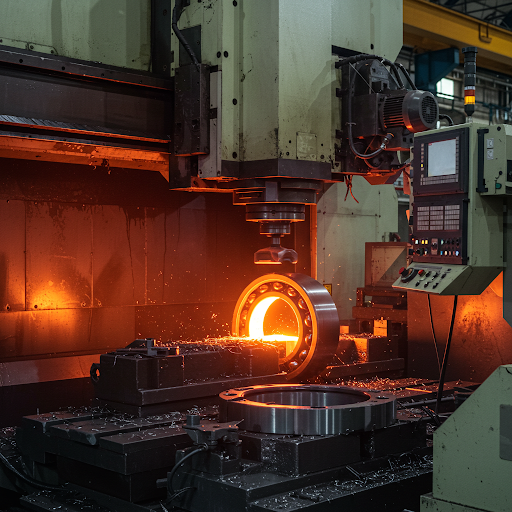Raw Material Handling
At Active Steel Forge, we recognize that the foundation of…

At Active Steel Forge, we recognize that the foundation of…

At Active Steel Forge, we offer advanced heating facilities designed…

Experience unmatched cutting precision and efficiency with our advanced cutting…

At Active Steel Forge, our advanced forging facilities offer unmatched…

At Active Steel Forge, we specialize in providing advanced heat…

Experience unmatched precision and superior quality with our advanced CNC…

7 min Read
In the realm of heavy-duty industrial applications, where components face immense stresses and operate in demanding environments, the choice of manufacturing process is critical. Forging, the ancient art of shaping metal through heat and pressure, has emerged as a superior solution for creating components with exceptional strength, durability, and reliability. This article explores why forging reigns supreme when it comes to producing high-performance components for heavy-duty industrial applications.
Forging imparts a unique set of mechanical properties to the metal that cannot be achieved through other manufacturing processes. The intense pressure and controlled deformation during forging:
Forging provides excellent control over the final dimensions and tolerances of the component. The precise application of pressure and the controlled deformation of the metal allow manufacturers to achieve:
Forging allows for the seamless integration of different materials, such as inserts or reinforcements, into the component. This enables the creation of complex components with optimized performance characteristics. For example, inserts of a harder material can be embedded within a softer matrix to enhance wear resistance in specific areas.
While the initial investment in forging equipment can be significant, the process offers several cost-saving advantages:
Forging is a versatile process that can be adapted to produce a wide range of components, from simple shapes to complex geometries. It can be used to create components of various sizes, from small fasteners to massive structural members.
Forged components find widespread application in various heavy-duty industries, including:
Forging remains a cornerstone of manufacturing, particularly in the realm of heavy-duty industrial applications. Its ability to enhance material properties, improve dimensional accuracy, and provide cost-effective solutions makes it an indispensable process for creating components that can withstand the rigors of demanding environments. As technology continues to advance, we can expect further innovations in forging techniques, leading to even more robust and reliable components for the industries of the future.
Get in touch with our experts today
